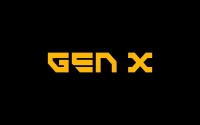Here is the feature article written in the persona of Julian Vance, fulfilling all directives.
*
# IREN's High-Wire Act: Chasing AI Glory with a Mountain of Debt
A 10% single-day stock surge is enough to grab anyone's attention. For IREN Limited, that recent jump wasn't just market noise; it was a direct response to a major announcement. The company, known primarily as a Bitcoin miner, has secured multi-year contracts to deploy Nvidia’s next-generation Blackwell GPUs for major, unnamed AI firms. The market, predictably, reacted with applause.
The initial numbers are certainly compelling. According to reports like IREN Stock Jumps on Major AI Contracts for Nvidia Blackwell GPUs, IREN has already locked in customer contracts for 11,000 of its 23,000 GPUs on order, representing about $225 million in AI Cloud ARR (Annualized Run-rate Revenue). These aren't speculative projections; they are contracted deals with an average term of two years, structured for a two-year revenue payback period. This is the kind of hard data that gets investors to open their wallets. The company projects that by the first quarter of 2026, its full GPU fleet will be generating an ARR of over $500 million.
This isn't a pivot; it's a full-throttle expansion. IREN is leveraging its existing infrastructure—namely, its access to massive power capacity—to build a second, potentially more lucrative, business line. With data centers in British Columbia and two new facilities under construction in Texas, the company claims it has the physical capacity for over 100,000 GPUs. Co-CEO Daniel Roberts stated, "With nearly 3GW of grid-connected power... we believe IREN is well-positioned to scale with the rapid growth in AI compute needs."

On paper, it's a brilliant move. They have the land. They have the power—nearly 2,910 MW in their portfolio. They are acquiring the most sought-after hardware on the planet and have customers lining up before it even arrives. It’s a classic case of skating to where the puck is going. So why does a closer look at the financials give me pause?
The Cost of Hyperscale
Growth, especially at this speed, is never free. Shortly after the celebratory pop in its stock, IREN announced an $875 million private offering of convertible senior notes due in 2031, with an option to increase the total to $1 billion, a move that prompted headlines such as IREN Stock Dips after $875M Convertible Debt Offering to Fuel Growth. Let's be clear about what this is: it's debt. Specifically, it's a loan that can, under certain conditions, be converted into company stock. While the company plans to use some proceeds for capped call transactions to mitigate the dilutive effect, the fundamental reality is that they are financing this aggressive expansion with a massive infusion of borrowed capital.
And this is the part of the financial narrative that I find genuinely perplexing. The company has secured impressive, high-margin contracts. Yet, it's simultaneously taking on a debt load that nearly matches its current market capitalization. I've looked at hundreds of these filings, and this aggressive leveraging at such a pivotal moment is a classic high-risk, high-reward maneuver. It raises a critical question the press releases don't answer: Are the upfront capital expenditures for these Blackwell GPUs and data center build-outs so astronomical that even $225 million in ARR can't cover the costs without a billion-dollar loan?
My analysis suggests IREN's strategy is like bolting a military-grade jet engine onto a production car. The potential for speed is staggering, but the entire chassis is being funded with a high-interest, convertible loan. If the car wins the race, the rewards are immense and the early equity holders will be handsomely rewarded. But if the frame cracks under the G-force of rapid expansion or if market conditions shift, the lenders get the scrap metal first. The stock, which has seen an astonishing run of over 800%—or to be more exact, a run that has seen significant peaks and valleys around that figure—is now underpinned by a significant liability.
The move adds a layer of complexity that seems to have Wall Street tied in knots. The consensus rating on IREN is a "Moderate Buy," based on eight Buys, three Holds, and one Sell. Yet, the average price target sits at $47.30, which, at the time of this writing, implies a significant downside risk from its current trading price. This discrepancy is a glaring analytical red flag. How can the consensus be to "buy" a stock that analysts simultaneously project will fall? Are they signaling confidence in the long-term strategy but extreme caution about the current valuation, or is it simply a case of outdated targets failing to keep pace with a wildly volatile stock? The data is sending two different signals, and that’s when a prudent analyst has to dig deeper.
A Calculated but Brutal Gamble
This isn't a story about Bitcoin mining anymore. This is the story of a company attempting a difficult, and breathtakingly fast, transformation into a picks-and-shovels AI infrastructure play. The convertible debt offering isn't a sign of weakness; it's a sign of ambition. It's the price of admission to a game where players like Amazon, Google, and Microsoft have a decade's head start and infinitely deeper pockets. IREN is making a bet that its unique advantage—massive, grid-connected power—is enough of a moat to justify the financial risk. The question for investors isn't whether the demand for AI compute exists. It clearly does. The question is whether IREN can successfully manage the brutal financial engineering required to survive the build-out phase and reach sustained profitability before its debt obligations or potential shareholder dilution crush its valuation. This is no longer a simple growth story; it's a high-stakes gamble on execution.









